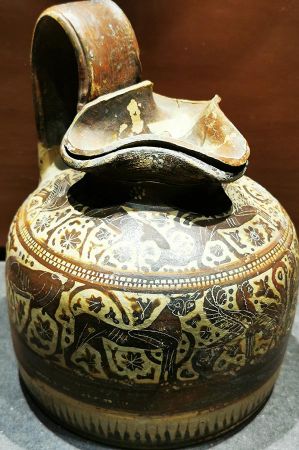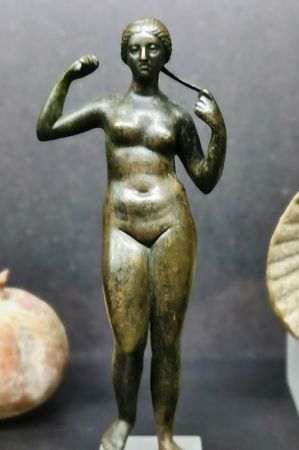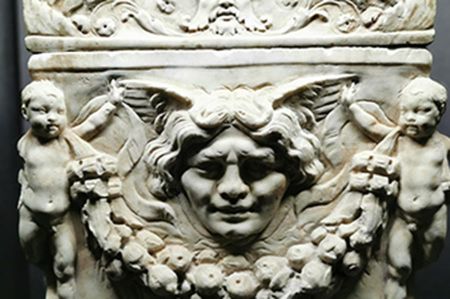Greco-Roman collection in the Musée d’Archéologie
- Written by Portal Editor
Around 2600 years ago, around 600 BC, the Greeks founded a small settlement on the south coast of what is now France as part of their colonization and gave it the name "Massalia". We have already written an article about this.
In doing so, they laid the foundation for a city that has proven its permanence over the centuries and, through its historical significance, has linked the most diverse eras with one another - starting with the Greeks and Romans up to modern times.
Tour of the Greco-Roman Museum of Marseille

In the area of so-called classical antiquity, exhibits from the Middle East, Etruria and Cyprus are presented.
The collection from Cyprus with 185 pieces presents two thousand years of history of the Mediterranean island. Ancient Greece is represented with Attic and Corinthian ceramics.
Architectural fragments, coins and portraits from the Roman period can be seen, especially finds from Marseille itself.
Prehistory of Marseille - settlement from Phokaia

In the year 546 BC In the 4th century BC, Phocaea was captured by the Persians under Cyrus the Great. The rich families of the metropolis had enough time to flee and seek refuge in their colonies, thus contributing to their development. Nevertheless, the site of Phocaea was not completely abandoned, as evidenced by the theater built in the 4th century BC. The famous Temple of Athena collapsed after an earthquake in the 2nd century AD, but was rebuilt in marble by the Romans.
Greek colonists from Asia Minor
The Phocaeans founded Massalia (Marseille) near the mouth of the Rhône, then Auenion (Avignon), Agathe Tyche (Agde), Aigitna (Cannes), Antipolis (Antibes) and Nikaia (Nice), Allalia (Aléria), a trading post on the east coast of Corsica, and Hyele (Elea) in southern Italy, as well as powerful colonies in Spain, such as Emporion (Empúries) in Catalonia.
The Greek word ἐμπόριον (empórion) referred to a maritime trading post.
During the years of the civil war between Julius Caesar and Gnaeus Pompey, Massalia wanted to remain neutral, but Caesar did not tolerate this. It was only when the city decided not to take sides in the civil war between Pompey and Caesar in the years 49-46 BC that it was conquered by Caesar's soldiers and renamed "Massilia". In 46 BC, the city was finally conquered after a six-month siege and soon after was integrated into the province of Narbonensis. It remained part of the Roman Empire until the end of the Empire and gradually lost its Greek character.
Prehistoric local history in the museum
According to current research, in addition to the building complex interpreted as a sanctuary, there was at least one craftsmen's quarter and one residential quarter.
According to current interpretation, it was completely destroyed in a Roman attack in 124 BC, but the time of destruction is also possible earlier in the 2nd century BC.
During the Second Punic War, the Romans formed an alliance with the Greek colony of Massalia (Marseille).
The Greeks called on their allied partner for help and Rome organized a first punitive expedition in 124 BC. The Celts initially defended themselves successfully.
The Romans lost some soldiers and retreated.
Roman sources report that the barbarians beheaded the bodies of the Romans and nailed the mummified skulls to the walls of their sanctuaries and houses.
The following year, a second expedition followed under the leadership of the consul Gaius Sextius Calvinus.
The Romans positioned these weapons on the mountain slopes of the capital Entremont and at the sanctuary of Roquepertuse.
After a few days, the Celts gave up and fled, while the Romans completely destroyed Entremont and Roquepertuse.
The wooden buildings collapsed and burned. Reconstruction was prohibited and the legion founded the new city nearby: Colonia Aquae Sextia, today's Aix-en-Provence. The Salluvier people were eliminated and replaced by other Celts, Romans and Greeks. Roquepertuse and Entremont were never rebuilt.
Please read as well:
